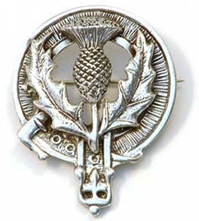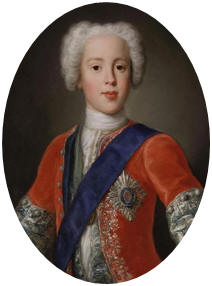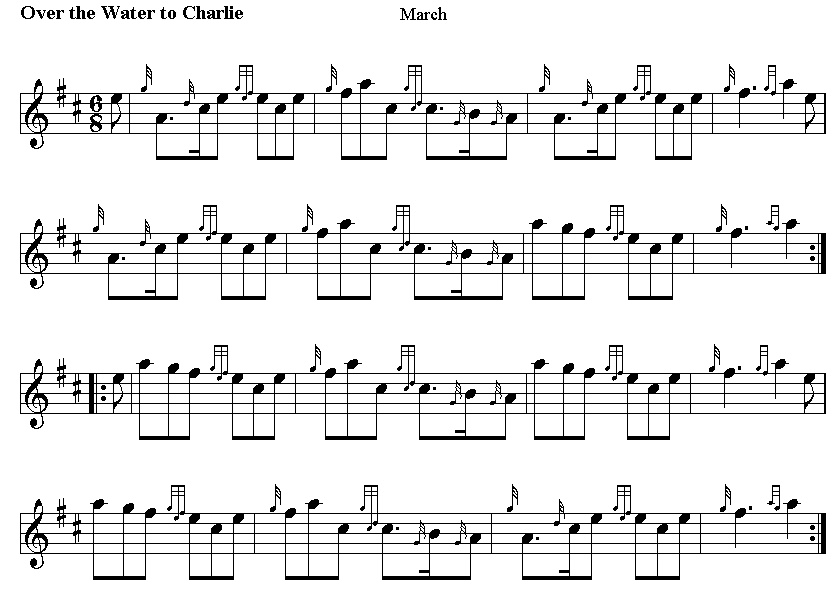
Best viewed in
Internet Explorer
Music (PDF)
Music (BMW)
Back to

Updated
05/29/2020 |

Over the Water to Charlie
|
Although
the title stems from the Jacobite era, the tune is older
and has had many names, having been based on a 1740's
dance tune called "Potstick." By the late 1740's it
appears in published collections with the "Over the
Water" title, a title that first appeared in John
Walsh's Complete Country Dancing Master, volume the
Third (London, 1749). It also was printed in David
Rutherford's Complete Collection of 200 of the Most
Celebrated Country Dances (London, 1756), and in a few
publications by Charles and Samuel Thompson, including
their 1757 country dance collection, and a tutor for the
hautboy (oboe) printed in 1758 and again in 1770.
Cheapside, London, musician Walter Rainstorp included it
in his music manuscript copybook, begun in 1747, as did
London flute player John Simpson (1750). If the "Over
the Water" title is taken to be a shortened version of
"Over the Water to Charlie" (and not a complete name in
itself), it is remarkable in that the Walsh volume
appeared only a few short years after The Pretender's
defeat at Culloden (1745) and his exile to France.
Prince Charles Edward Stuart (1720-1788) was indeed
'over the water', in France with a price on his head
should he return to Britain.
"Over the Water to Charlie" was employed variously as an
accompaniment to dancing in the British Isles and was
imported as a dance tune to America. A morris dance
version was collected in the village of Bledington,
Gloucestershire, in England's Cotswolds, while country
dance instructions, but not the melody, appear in the
Scottish Menzies Manuscript, 1749 (contained in the
Atholl Collection of the Sandeman Library, Perth). The
title appears in Henry Robson's list of popular
Northumbrian song and dance tunes ("The Northern
Minstrel's Budget"), which he published c. 1800, and in
the music manuscript collections of Joseph Kershaw and
Joshua Gibbons. In America, the tune appears in Giles
Gibbs' MS collection made in 1777 in East Windsor,
Connecticut, and in the music copybook of Henry
Livingston, Jr. Livingston purchased the estate of
Locust Grove, Poughkeepsie, New York, in 1771 at the age
of 23. In 1775 he was a Major in the 3rd New York
Regiment, which participated in Montgomery's invasion of
Canada in a failed attempt to wrest Montreal from
British control. An important land-owner in the Hudson
Valley, and a member of the powerful Livingston family,
Henry was also a surveyor and real estate speculator, an
illustrator and map-maker, and a Justice of the Peace
for Dutchess County. He was also a poet and musician,
and presumably a dancer, as he was elected a Manager for
the New York Assembly's dancing season of 1774-1775,
along with his 3rd cousin, John Jay, later U.S. Chief
Justice of Governor of New York.
 |
|
Lyrics
|
Come, boat me ower, come, row me ower,
Come, boat me ower to Charlie;
I'll gi'e John Ross another bawbee,
To ferry me ower to Charlie.
Chorus
We'll over the water, and over the sea,
We'll over the water to Charlie;
Come weel, come woe, we'll gather and
go,
And live and die wi' Charlie.
It's weel I lo'e my Charlie's name,
Though some there be that abhor him;
But O, to see Auld Nick gaun hame,
And Charlie's faes before him!
Chorus |
I swear by moon and stars sae bricht,
And the sun that glances early,
If I had twenty thousand lives,
I'd gi'e them a' for Charlie.
Chorus
I ance had sons, I now ha'e nane;
I bred them, toiling sairly;
And I wad bear them a' again,
And lose them a' for Charlie!
|
|
|
|
|



